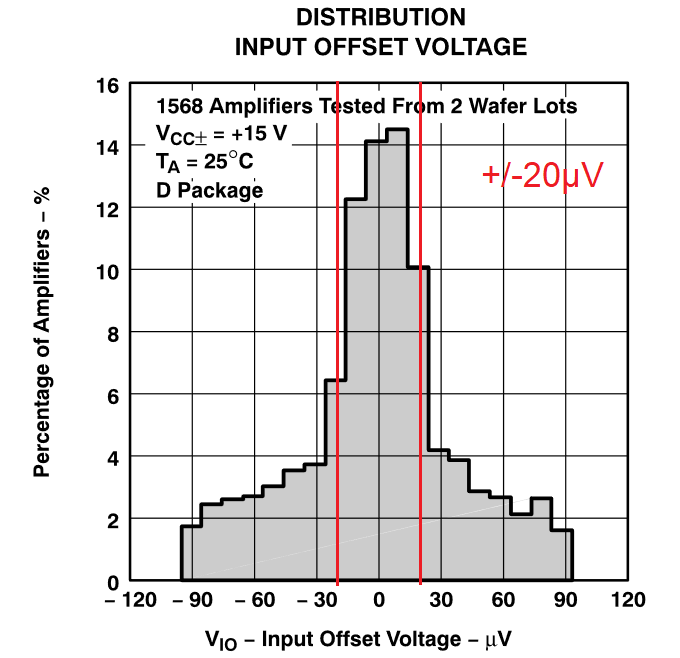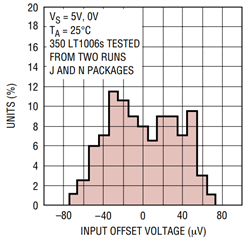Other Parts Discussed in Thread: TLC2262, TL032A, TLC277, TL052A, OP07D, TLE2027
Hi team,
Could you please help us for following 2 questions?
I referred to the page, https://e2e.ti.com/blogs_/archives/b/precisionhub/posts/ic-long-term-stability-the-only-constant-is-change.
1. Typical value of Vio is shown 300uV in 25C.
Does it mean it is ±1σ and around 68% products is within this range?
2. Can we know rough rating that reaches around Max value, 2500uV for this product?

Best regards,
Yuto



